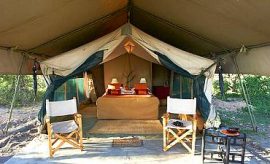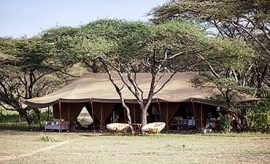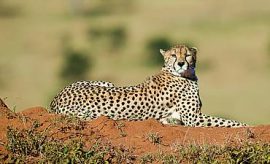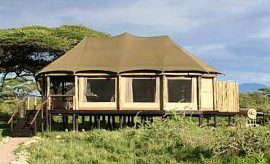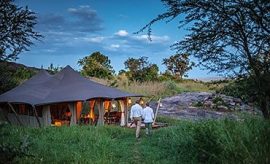2025 & UPCOMING 2026 (2024) WILDEBEEST HERD MIGRATION TRACKING UPDATES FOR SERENGETI IN TANZANIA
READ MORE ON SERENGETI NATIONAL PARKDaily Tracker News On The Serengeti & Masai Mara Great Wildebeest Migration Herd For 2025
The countdown is on! ⏳ Only 5 months left until the grand reveal of TAASA Migration Camp, our mobile Serengeti camp.
Who’s ready to join us on this once-in-a-lifetime adventure at TaasaLodge ? 🦓
🎥worldplayground
.
#Serengeti #Safari #GreatMigration #WildlifeSafari #SerengetiNationalPark #SafariAdventure #AfricanWildlife #NatureLovers #TravelAfrica #WildlifePhotography #BigFive #SafariExperience #AfricaWildlife #SerengetiSafari #SafariTour #ExploreAfrica #AfricanAnimals #NaturePhotography #AfricaTravel #WildebeestMigration #SafariLife #GameDrive #WildlifeConservation #SerengetiWildlife #MigrationSeason #AfricanVibes
When we visited the Serengeti, it was before the great wildebeest migrations. We got lucky to see the first big herds crossing the plains. I had to cut the video in half, there were so much more animals ! And this was just a small group according to our guide. #safari #serengeti #wildebeest #wildebeestmigration #tanzania #wildlife #travelblogger
The 8th Wonder of the World Awaits!🌍🦓🐃
Every year, millions of wildebeest thunder across the Maasai Mara, creating one of nature’s greatest spectacles—the **Great Wildebeest Migration**! Witness the drama, the beauty, and the untamed wilderness as these majestic creatures embark on their epic journey. Don’t miss your chance to experience this once-in-a-lifetime adventure!
📞 078300808
📧 admin@riroporini.com
🌐 www.riroporini.com
#8thWonderOfTheWorld #WildebeestMigration #MaasaiMara #GreatMigration #SafariAdventure
🌍 The Great Migration – A Journey of Survival 🌍
The Serengeti comes alive as thousands of wildebeest charge across the river, facing powerful currents and lurking predators in their quest for greener pastures. 🐃🌊 This is nature’s most thrilling spectacle—raw, untamed, and breathtaking.
Experience the magic of the Great Migration with Executive Bush Safaris and witness the wild like never before! 🇹🇿✨
#executivebushsafaris #greatmigration #serengetisafari #wildebeestmigration #wildlifesafari #exploretanzania #natureatitsbest #travelafrica #africanwildlife
One in a million!
We consider ourselves lucky to host these magnificent creatures for a few months of the year whilst they follow the grazing and water availability around the greater Serengeti ecosystem🌱💦
•
•
•
#greatmigration #greatmigrationsafari #wildebeest #wildebeestmigration #conservancyguardians #ngorongoroconservationarea #tanzaniatravel #ndutulodge #tanzaniaparks #ndutu #safari #ndutusafari #tanzania #ndutusafarilodge #rainyseason #photography #tanzaniasafari #serengeti #NdutuSafariLodge
𝗦𝗰𝗮𝘃𝗲𝗻𝗴𝗲𝗿𝘀 𝗮𝗻𝗱 𝘁𝗵𝗲 𝗚𝗿𝗲𝗮𝘁 𝗠𝗶𝗴𝗿𝗮𝘁𝗶𝗼𝗻
During the Mara River crossing, thousands of wildebeest perish, attracting large numbers of scavenger birds.
Vultures follow predators like lions and hyenas to clean up leftovers.
Each species of vulture has a specific role: large Lappet-faced vultures tear open carcasses, while smaller vultures feed on softer remains.
These birds play an essential role in maintaining the Serengeti’s ecological balance by ensuring carcasses are quickly disposed of, keeping the environment clean and disease-free.
.
.
Request a quote for a private small group trip.📩
_______
𝗪𝗵𝗮𝘁𝘀𝗮𝗽𝗽: +𝟮𝟱𝟱𝟳𝟲𝟴𝟬𝟭𝟮𝟴𝟯𝟮
𝗘𝗺𝗮𝗶𝗹 𝘂𝘀: 𝘁𝗿𝗮𝘃𝗲𝗹@𝗲𝗮𝘀𝘁𝘀𝗮𝗳𝗮𝗿𝗶𝘀.𝗰𝗼𝗺
𝗪𝗲𝗯𝘀𝗶𝘁𝗲: 𝗲𝗮𝘀𝘁𝘀𝗮𝗳𝗮𝗿𝗶𝘀.𝗰𝗼𝗺.
.
________
#eastsafaris #instatravel #wildlife #animals #travelafrica #travel #tours #tourism #explorer #africanimals #viaje #wildebeestmigration #nature #discovery #honeymooners #nomadlifestyle #euro #canada #adventure #holidays #2021wedding #worldcup #holidaymood #lover #MigrationUpdate
Witness the Great Migration in the heart of the Maasai Mara, where thousands of wildebeest and zebras brave the Mara River in an awe-inspiring journey of survival. This breathtaking event is one of the Seven Wonders of the Natural World—a true bucket-list experience!
Join Kenmara Tour Operators and be part of this unforgettable adventure!
#WildebeestMigration #MaasaiMara #KenmaraTours #SafariExperience #WildlifeWonder #TheGreatMigration #NatureAtItsBest
✨ Serengeti’s Hidden Gem — Sametu Camp ✨
Wake up to the golden hues of the Serengeti and the distant roar of a lion. Nestled in the heart of the wilderness, Sametu Camp offers an intimate safari experience where luxury meets the raw beauty of nature. From breathtaking sunrise game drives to starlit dinners by the campfire, every moment here is pure magic.
Your adventure of a lifetime awaits with Entice Africa Safaris! 🐘🌿
☎ Get in touch via: +254 799871225
📧info@enticeafricasafaris.com
🌎www.enticeafricasafaris.com
---
#SerengetiSametu #LuxurySafari #EnticeAfricaSafaris #Kenyanbeaches #ElephantFacts #KenyanWildlife #WildlifeExperience #EnticeAfricaSafaris #SafariEssentials #AfricaTravel #WildlifeSafari #LuxurySafari #africa #Tanzaniasafaris #wildebeestmigration #travel #kilimanjaro #travelgram #kenyasafari #wildlifephotography #adventure #travelphotography #magicalkenya #tourism #tanzaniahotels #africadestination #safaricamps
Wildebeest Migration (Photography, various sizes, can add hand of artist)
This is part of a series I took when I was in Tanzania to hike Kilimanjaro and see the wildebeest migration. Check out my website for some of the others. If you like the series but are looking for a different perspective let me know. I have many others that are not posted.
#wildebeestmigration #fpperfectfocus #fpaccepted #elizabethcvarner #photography #africa # tanzania
Have you ever seen millions of wildebeest thundering across the Serengeti? 🦬
Now’s your chance! Join Topdeck Safari and witness one of nature’s greatest spectacles.
📩 Reserve Your Spot: info@topdecksafari.com
#TopdeckSafari #GreatMigration #WildebeestMigration #AfricanSafari #BucketListTravel #NaturePhotography #TanzaniaTravel #WildlifeSafari #TravelWithUs #OnceInALifetime
The Great Migration is in full swing! As we are in mid-February, thousands of wildebeest are calving in the southern Serengeti, marking one of the most exciting times of the year. It`s a season of new life, with around 8,000 calves born every day!
But with new life comes danger, predators are on the prowl, and the drama of the hunt is never far behind. This is the perfect time to witness the raw beauty and challenges of the circle of life.
Want to witness this incredible season of new life, firsthand? Reach out to start planning your dream safari!
#GreatMigration #SafariAdventure #WildebeestMigration #NatureAtItsBest #Serengeti #WildlifeSafari #AfricanWildlife #CalvingSeason
Tanzania is a breathtaking destination with diverse landscapes, from the majestic Mount Kilimanjaro 🏔️ to the vast Serengeti plains 🦁🐘. It is home to rich wildlife, the Great Migration 🦬, stunning Zanzibar beaches 🏝️, and vibrant cultures 🛖🎶. Whether you seek adventure, relaxation, or cultural experiences, Tanzania offers it all! 🌍✨
#VisitTanzania 🇹🇿 #ExploreTanzania 🏕️ #SafariExperience 🦓 #SerengetiMigration 🌿 #Kilimanjaro 🏔️ #ZanzibarBeaches 🌊 #WildlifeAdventure 🦁 #AfricaWonder 🌍
#nathanafricansafari
ᴡʜᴀᴛ ɪꜱ ᴛʜᴇ ɢʀᴇᴀᴛ ᴡɪʟᴅᴇʙᴇᴇꜱᴛ ᴍɪɢʀᴀᴛɪᴏɴ - is the annual migration of wildebeest and other animals including zebras and gazelles. It is the largest herd movement of animals on the planet with up to 1,000 animals per square kilometer.
Start planning your Wildebeest Migration Experience in us Today.
•
•
.
.
.
.
.
.
:
.
#wildlife #nature #wildlifephotography #greatmigration #naturephotography #animals #photography #bird #wild #animal #travel #naturelovers #wildebeest #photooftheday #birdsofinstagram #love #migration #birdphotography #nikon #natgeo #africa #wildebeestmigration #wildebeest #conservation #perfection #adventure #captures #tanzaniasafari #safari #bhfypy
Imagine over a million wildebeests, zebras, and gazelles moving in unison across the Serengeti—this is the Great Wildebeest Migration, one of the most spectacular wildlife events on Earth! Every year, these incredible animals travel in search of fresh grazing lands, facing predators, rivers, and countless challenges along the way. It`s a true display of survival, instinct, and the raw beauty of nature. Witness this once-in-a-lifetime spectacle with YUNIVESO Travel and experience the wild like never before!
..
..
..
..
..
#WildebeestMigration #GreatMigration #Serengeti #TanzaniaWildlife #YUNIVESOTravel #NatureAtItsBest #WildlifeSafari #AfricanAdventure #ExploreTanzania #SafariExperience
Let me share with you my day in Serengeti National Park from dusk till dawn. I had seen a lot in Tanzania. Still, I had seen nothing before witnessing the great wildebeest migration in Northern Serengeti - the most unique natural event in the world.
Seeing one of the world`s most remarkable animal migrations made me feel emotional and so small, and that is how we should think about nature. Whenever we spend time in nature, we should admire and respect this unique Earth and its biodiversity—Serengeti left me speechless.
Today, we live in a new geological age called Anthropocene, meaning humans have substantially impacted our planet. During the last decades, most humans have thought that the Earth belongs only to us and we can exploit it without caring. But what about trees, insects, mammals, and birds? What about the last lions wandering free?
We should feel small and humble and research for wisdom and knowledge that can restore the balance between nature and humans we used to have and have been ignoring for a long time.
And I agree. The endless plains of the golden savannah in Serengeti will permanently change you. It calls you to come back home.
Experience it for yourself tanzaniaparks
#serengeti
#serengetinationalpark
#tanzaniasafari
#safariphotography
#visitnatives
#wildlifesafari
#tanzaniaunforgettable
#tanzaniadestination
#africansafari
#wildebeest
#wildebeestmigration
The Maasai Mara migration, also known as the Great Migration, is one of the most spectacular wildlife events on the planet. It involves the movement of millions of wildebeest, zebras, and other antelopes across the Serengeti ecosystem in Tanzania and the Maasai Mara National Reserve in Kenya. The migration is a continuous, year-round event, as the animals move in search of greener pastures and water sources.
The migration typically follows a circular pattern, with the animals moving from the southern Serengeti in Tanzania to the northern plains of the Maasai Mara in Kenya, and then back again. This cyclical movement is driven by the need for the animals to find fresh grazing lands and to reproduce.
The migration is a natural spectacle that attracts visitors from around the world, including wildlife enthusiasts, photographers, and researchers. It’s a prime opportunity to witness dramatic river crossings, where the animals brave crocodile-infested waters in their quest for better grazing areas.
The Maasai Mara migration is not only a significant event for the ecosystem and the animals involved, but it is also a major source of tourism for Kenya and Tanzania. The migration supports local economies and provides critical revenue for conservation efforts in the region.
Overall, the Maasai Mara migration is a remarkable natural phenomenon that showcases the beauty and wonder of the animal kingdom and the importance of preserving these ecosystems for future generations.
#WildebeestMigration
#GreatMigration
#SerengetiMigration
#MasaiMaraMigration
#TanzaniaSafari
#KenyaSafari
#AfricanWildlife
#SafariAdventure
#NaturePhotography
#WildlifeConservation
#BucketListDestination
#TravelAfrica
🌍 Explore Serengeti`s Hidden Gems! 🦁🌿
Picture this: herds of wildebeest crossing endless plains, and spotting a rare black rhino among ancient rock formations.
Serengeti National Park isn`t just any safari spot—it`s a wild adventure waiting to happen!
From the lively Seronera River Valley to the stunning views from Naabi Hill, every corner here is bursting with wildlife and natural beauty.
📸✨ Check out our guide to the top 5 spots and start planning your epic safari getaway!
.
.
.
.
.
#serengeti #serengetinationalpark #serengetipark #serengeti_national_park #serengetimigration #serengeticat #serengetinationalparktanzania #serengetisafaris #tanzania #zanzibar #arusha #safariphotography #bigfive #africansafari #africasafari #safarilife #wildafrica #safariafrica #manyara #tsavoeast #tanzaniaparks #exploretanzania
This beautiful photograph was taken of the wildebeest herds in the Ndutu area of the Serengeti National Park in Tanzania on the 8th of March 2023.
📸 - michaelsolomonkipuyo
Repost from herdtracker
.
.
.
.
.
#herdtracker #wildebeestmigration #wildebeest #tanzania #serengeti
#kenyawildlife #wildlife #kenya #wildlifephotography #africa #kenyasafari #nature #animals #masaimara #naturephotography #wildlifeplanet #photography #africanwildlife #magicalkenya #perfection #safari #masaimaranationalpark #kenyafashion #masaimarasafari #kenyanart #kenyatourism #natgeoyourshot
A family of brave zebras lead the heard of wildebeest across the Emboo river.
We left our camp around 6am and waited at the riverbank until the animals decided to cross. Finally, after we baked in the heat of the Maasai Mara all day, the animals decided to cross at 5:30pm. Once one animal goes, they all follow. In this case the zebras were first, and about 5000 wildebeest followed.
Experience the awe-inspiring Serengeti migration, where millions of wildebeest and zebras journey across the vast plains in one of nature`s greatest spectacles
#SerengetiMigration#GreatMigration#WildebeestMigration
#AfricanSafari#WildlifePhotography#NatureWonder#ExploreTanzania#SafariAdventure#NatureLovers#WildlifeExperience
One of the most exciting times to be on safari in East Africa is during the great wildebeest migration. A natural phenomen like no other, this once in a lifetime dramatic viewing should be on everyone’s bucket list! Things are well on their way as you can see from this video taken by our Head Guide craig1mcfarlane, currently at our #serengetipioneercamp. How many of you would like to witness the migration and have it on your travel bucket list? Make sure you put the sound on when you watch the video to get a true sense of it all! #elewanamoments #wildebeestmigration #greatmigration #wildebeest #serengeti #tanzania #mara #kenya #safari #travel #bucketlist #travelphotography #travelbucketlist #goals #instatravel #travelgram #destinations #destinationearth #natgeoyourshot #herdtracker #igafrica
beautifuldestinations natgeo_africa natgeowild herdtracker discoverychannel discoveryloyalty jgblackbook emerging_destinations virtuosoltd wonderful_places travelafricamagazine nomadmagazineafrica
Singita Field Guide Braya Masunga captured a frantic Great Migration moment at Singita Grumeti as hundreds of wildebeest and zebra race to cross the river.
#GreatMigration #WildebeestMigration #Wildebeest #SingitaGrumeti #GrumetiFund #Tanzania #Serengeti #SerengetiSafari #LuxurySafari #WildlifeMoments #SafariMoments #WildlifePhotography #OurSingita #Singitagram #Singita_ #WildlifeConservation #SustainableTourism GrumetiFund
Embark on a journey to witness the breathtaking annual wildebeest migration in the Masai Mara National Reserve, Kenya. From July to early August and November, over a million wildebeest, zebra, and other species traverse the African plains in a remarkable display of nature`s wonder. Don`t miss out on this unforgettable adventure—contact me to plan your African safari experience today! 🦓🌍 #MasaiMaraMigration #KenyaSafari #WildlifeAdventure #AfricanSafari
THE GREAT WILDEBEEST MIGRATION FROM THE AIR. We know the very best spots to see this magnificent spectacle while remaining totally secluded and private. Talk to us about a 2021 migration safari - luxury, adventure or a bit of both. #greatmigration #serengetimigrationsafaris #wildebeestmigration #bucketlisttravels #greatestshowonearth #africasafari #exploreafrica #serengetimigration #privatelyguided #markthorntonsafaris serengetinationalpark gmstanzania
The endless fight for survival in the endless plains of Serengeti ... stunning!
So happy we did catch the great wildebeest migration crossing the river on its way to Masai Mara. I felt like when I was a little boy in front of these incredible TV documentaries 😃
#serengeti #wildebeestmigration #wildebeest #safari #marariver
#herdtracker #leopard #zebra #lion #elephant #sunset
#friends #tanzania
#lespiedsbaladeurs👣🌍
Singita Field Guide Bernard Hosea recently captured this chaotic wildebeest crossing at Singita Grumeti in Tanzania; migrating herds braving the fast-flowing waters of the crocodile-infested Mara River in their annual search for good grazing.⠀
#GreatMigration #WildebeestMigration #MaraRiver #Wildebeest #SingitaGrumeti #GrumetiFund #Tanzania #Serengeti #SerengetiSafari #LuxurySafari #WildlifeMoments #SafariMoments #WildlifePhotography #OurSingita #Singitagram #Singita_ #WildlifeConservation #SustainableTourism GrumetiFund
Wildebeest and zebra are attacked by crocodile when they pass Mara River,explore with us to experience the annual movement of animals from Tanzania to Kenya
#masaimara #serengetipark #wildebeest #zebra #honeymoon #masaimaramigration #instagood #explore #travel #holiday #africanwonders
The serengeti migration,often called "The great migration" is one of the most remarkable wildlife spectacles on earth
each year, over 1.5million wildebeest, along with hundreds of thousands of zebras and gazelles, migrate across the serengeti ecosystem in tanzania and the maasai mara in kenya.this continuous circular journey,driven by the search for fresh grazing and water,follows a predictable pattern influenced by seasonal rains.The migration also attracts predators like lion,cheetahs,and crocodiles, making it a dramatic and dynamic natural event.witness this natural wonder with MJ safaris __ we can arrange an unforgettable experience for you!🦓🌍
#serengetimigration #greatmigration #tanzaniasafari #travelafrica #wildlifephotography #safariadventure #mjsafaris #naturelovers #maasaimara
Great Wildebeest Migration Update: While the majority of the herds are currently in the Masai Mara in Kenya, large groups have begun their journey back to the Serengeti in Tanzania, crossing over the crocodile infested Mara river en-route.
.
.
Get in touch to hear more about natures` greatest spectacle and to begin planning your dream safari! (We shot this video this time last year in Serengeti North)
.
.
#greatmigration #bucketlist #wildlifephotography #safari #serengeti #explore #adventure #wildebeest #zebra #travelafrica #wildlife #thegreatwildebeestmigration #herdtracker #wien #vienna to #tanzania
.
📷Kidogo Travel Design
La grande migrazione annuale degli gnu (Connochaetes taurinus) attraverso il fiume Mara dalla Tanzania al Kenya, luglio 2023. The annual great migration of thousands of wildebeest from the Serengeti in Tanzania to Masai Mara in Kenya, July 2023.
#safari #tanzania #wildlife #africa #wildbeestmigration #wildebeest #greatmigration #greatmigration2023 #safariphotography #wildlifescape #wildlifeonearth #wildlifeplanet #adventure #wildlifephotography
#gnu #connochaetestaurinus #serengeti #serengetinationalpark #serengetishallneverdie #migration #serengetimigration
The wildebeest herds are still streaming through the Western Corridor of the Serengeti and are providing extraordinary game viewing for guest’s minutes from camp.
----------
📍 : andbeyondgrumeti
🌍 : Tanzania
----------
#seewhatliesbeyond #travelandbeyond #andbeyondtravel #andbeyondgrumeti #gowestandbeyond #wildlifewednesday #andbeyondmigration #greatmigration #herdtracker
CONTACT AND TALK TO OUR SAFARI EXPERTS TODAY TO KICK-START YOUR TOUR PLANNING PROCESS
Request Tanzania Custom Or Tailor-Made Safari Pricing Based On Your Specific Travel Dates At Your Preferred Safari Tier Camp Or Lodge
CONTACT AN EXPERT ON TANZANIA SAFARI PRICES & TOURSRead More +
WHERE TO STAY IN SERENGETI
Accommodations in Serengeti come in two main types, lodges and camps. Lodges are solidly brick or stone-built complexes while camps are pitched canvas that are either permanent, seasonal or mobile units.
Read More +
SAFARI & TOUR IN SERENGETI
With your AfricanMecca guide in a custom-designed 4x4 vehicle, you will experience the wildebeest migration, the Big Five - from royal lion prides to pachyderm elephant herds on the plains and more.
Read More +
WILDEBEEST MIGRATION
The Great Wildebeest Migration is the largest single movement of wild animals in the world, deservedly listed as one of its eight Natural Wonders and an exceptional inspiration for a dream tour.
Read More +
BEST TIME TO VISIT SERENGETI
There are distinct best times for a nature trip to Serengeti. Once you know what you have experienced and what more it has to offer, you will want to return time and again as each month unfolds a new chapter.
Read More +
BALLOON SAFARI IN SERENGETI
A Serengeti balloon safari is a fantastic once in a lifetime experience, particularly suitable for a bird's eye-view game viewing experience on your AfricanMecca wildlife tour in northern Tanzania.
Read More +
MAASAI TRIBE OF SERENGETI
The iconic Maasai of the Serengeti and Ngorongoro wilderness have been herding their cattle for thousands of years. A proud, nomadic warrior race who count their wealth in cattle and children.
AFRICANMECCA REVIEWS
What are our Customers saying about us? READ MORE REVIEWS![]()
AfricanMecca's professionalism and care understands that what distinguishes Africa is its authenticity, the land, people and wildlife who do not share our world of fashion and fanfare that distinguish so many travel companies today.
Cyril Christo & Marie Wilkinson, Conservation Photographers, Authors & Wildlife Documentary Producers - USA
Jambo Raza, We all had a fantastic time on our Tanzania safari. Accommodations were excellent and we loved our guide - Rodgers. We will definitely recommend this safari to others. Thanks for all your help making the arrangements.
Dr Thomas Davis, Methodist Hospital, Minnesota, United States
AfricanMecca Safaris created a remarkable honeymoon tailored to our interests and desires. The quality of service and delivery of experience was unsurpassed. I highly recommend AfricanMecca Safaris to honeymooners, families, or any traveler.
Noorin & Jason Nelson - Maryland, United States
Thanks again to you for arranging a wonderful trip for us. Everything was great from the fantastic wildlife, the scenery, the people, the accommodations and the food. The safari was everything we had hoped for.
Liz and Gunnar Kristiansen - Ontario, Canada
I booked my safari holiday through AfricanMecca. They were the most helpful company I have ever dealt with and I work within the travel industry. I had the most amazing time. The holiday went as clockwork with no hitches anywhere.
Shelley Roberts - Hemel Hempstead, United Kingdom
We have returned from our African adventure and would like to thank you very much for your part in making this such a wonderful experience. We were lucky enough to time the Great Migration from the Serengeti, which was amazing.
Denise Paterson - Belmont, Australia
We had an absolutely amazing trip in Arusha, Serengeti and Gombe - everything went smooth as silk. Thank you so much Raza for making this trip, the trip of a lifetime. We had an absolutely brilliant time.
Tiffany Heitz & Lesley Smith - California, United States
EAST AFRICA SAFARI BOOKING TRIP IDEA FOR SERENGETI IN NORTHERN TANZANIA
When visiting Serengeti National Park, we recommend combining it with your Northern Tanzania safari to Tarangire, Lake Manyara and Ngorongoro Crater. End your trip with a Swahili cultural tour and beach holiday in Zanzibar.
You may optionally extend out to offbeat parks in Southern and Western Tanzania such as Nyerere (Selous), Ruaha or Katavi ending with a chimpanzee trekking safari at Gombe or Mahale by the relaxing Lake Tanganyika.
SERENGETI PARK SAFARI & TOUR PLANNING DETAILS
Kickstart Your Safari Planning
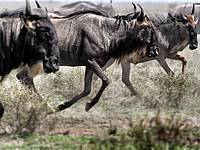
ARE YOU PLANNING TO BOOK AN AFRICAN SAFARI TO SERENGETI IN TANZANIA?
Do You Need Knowledgeable, Experienced & Specialist Guidance For Your Travels In Serengeti ? Let Us Help Plan Your Trip Itinerary Correctly
CONTACT AN AFRICA TRAVEL EXPERT ON SERENGETI NATIONAL PARKEXPLORE MORE ON SERENGETI NATIONAL PARK IN TANZANIA
HAVE YOU VISITED SERENGETI FOR AN AFRICA SAFARI IN TANZANIA?
Write A Travel Or Tourist Trip Review To Share Your Experiences
WRITE SERENGETI REVIEWAMS BLOG
VIEW ALL - 24 December 2024 by AfricanMecca Safaris, in Blog For AfricanMecca Safaris,Safari Planning Blog Posts - AfricanMecca Safaris
24 December 2024 by AfricanMecca Safaris, in Blog For AfricanMecca Safaris,Safari Planning Blog Posts - AfricanMecca SafarisWhat AfricanMecca Accomplished In 2024
What AfricanMecca Accomplished In 2024 Published By AfricanMecca Safaris | Blog ...READ MORE +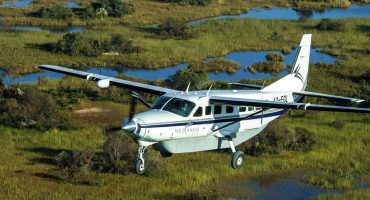 26 October 2017 by AfricanMecca Safaris, in Blog For AfricanMecca Safaris,Safari Planning Blog Posts - AfricanMecca Safaris
26 October 2017 by AfricanMecca Safaris, in Blog For AfricanMecca Safaris,Safari Planning Blog Posts - AfricanMecca SafarisBaggage Guidance & Restrictions On Flying Safaris In Africa
Baggage Guidance & Restrictions On Flying Safaris In Africa Published By Afr...READ MORE +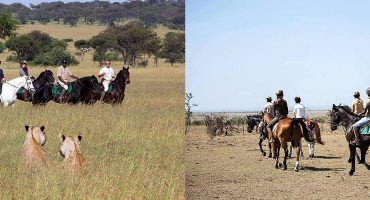 07 June 2017 by AfricanMecca Safaris, in Blog For AfricanMecca Safaris,Latest Kenya Blog Posts From AfricanMecca Safaris,Safari Planning Blog Posts - AfricanMecca Safaris
07 June 2017 by AfricanMecca Safaris, in Blog For AfricanMecca Safaris,Latest Kenya Blog Posts From AfricanMecca Safaris,Safari Planning Blog Posts - AfricanMecca SafarisMasai Mara Horseback Riding Safari In Kenya With AfricanMecca
Masai Mara Horseback Riding Safari In Kenya Published By AfricanMecca Safaris | ...READ MORE +







